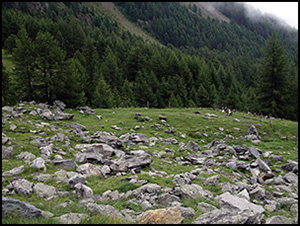Crossref Citations
This article has been cited by the following publications. This list is generated based on data provided by
Crossref.
Reitmaier, Thomas
and
Möckli, Daniel
2015.
Urgeschichtliche Milchwirtschaft in den Alpen.
EAZ – Ethnographisch-Archaeologische Zeitschrift,
Vol. 56,
Issue. 1/2,
p.
92.
Artioli, Gilberto
Angelini, Ivana
Kaufmann, Günther
Canovaro, Caterina
Dal Sasso, Gregorio
Villa, Igor Maria
and
Hart, John P.
2017.
Long-distance connections in the Copper Age: New evidence from the Alpine Iceman’s copper axe.
PLOS ONE,
Vol. 12,
Issue. 7,
p.
e0179263.
Reitmaier, Thomas
Doppler, Thomas
Pike, Alistair W.G.
Deschler-Erb, Sabine
Hajdas, Irka
Walser, Christoph
and
Gerling, Claudia
2018.
Alpine cattle management during the Bronze Age at Ramosch-Mottata, Switzerland.
Quaternary International,
Vol. 484,
Issue. ,
p.
19.
Wierer, Ursula
Arrighi, Simona
Bertola, Stefano
Kaufmann, Günther
Baumgarten, Benno
Pedrotti, Annaluisa
Pernter, Patrizia
Pelegrin, Jacques
and
Petraglia, Michael D.
2018.
The Iceman’s lithic toolkit: Raw material, technology, typology and use.
PLOS ONE,
Vol. 13,
Issue. 6,
p.
e0198292.
Carrer, Francesco
and
Angelucci, Diego E.
2018.
Continuity and discontinuity in the history of upland pastoral landscapes: the case study of Val Molinac and Val Poré (Val di Sole, Trentino, Eastern Italian Alps).
Landscape Research,
Vol. 43,
Issue. 6,
p.
862.
Carrer, Francesco
2020.
Encyclopedia of Global Archaeology.
p.
1.
Bernardini, Federico
Vinci, Giacomo
Horvat, Jana
Lavrenčič, Lucija
and
Sibilia, Emanuela
2020.
Protohistoric pastoral landscape in northern Istria revealed by airborne LiDAR: hill forts, enclosures and long linear walls in the Mali Kras plateau (southwestern Slovenia).
Archaeological and Anthropological Sciences,
Vol. 12,
Issue. 8,
Carrer, Francesco
2020.
Encyclopedia of Global Archaeology.
p.
834.
Reitmaier, Thomas
Carrer, Francesco
and
Walsh, Kevin
2021.
Petrification Processes in Matter and Society.
p.
115.
Granado, José
Harmath, Marianna
Tecchiati, Umberto
Oeggl, Klaus
Schibler, Jörg
and
Schlumbaum, Angela
2021.
MtDNA D-Loop Diversity in Alpine Cattle during the Bronze Age.
Diversity,
Vol. 13,
Issue. 9,
p.
449.
Caf, Nina
Sabatier, Pierre
Cucinotta, Julia
Rapuc, William
Dolenec, Matej
and
Šmuc, Andrej
2025.
Human influence at the Holocene treeline in the Julian Alps, Slovenia.
The Holocene,



